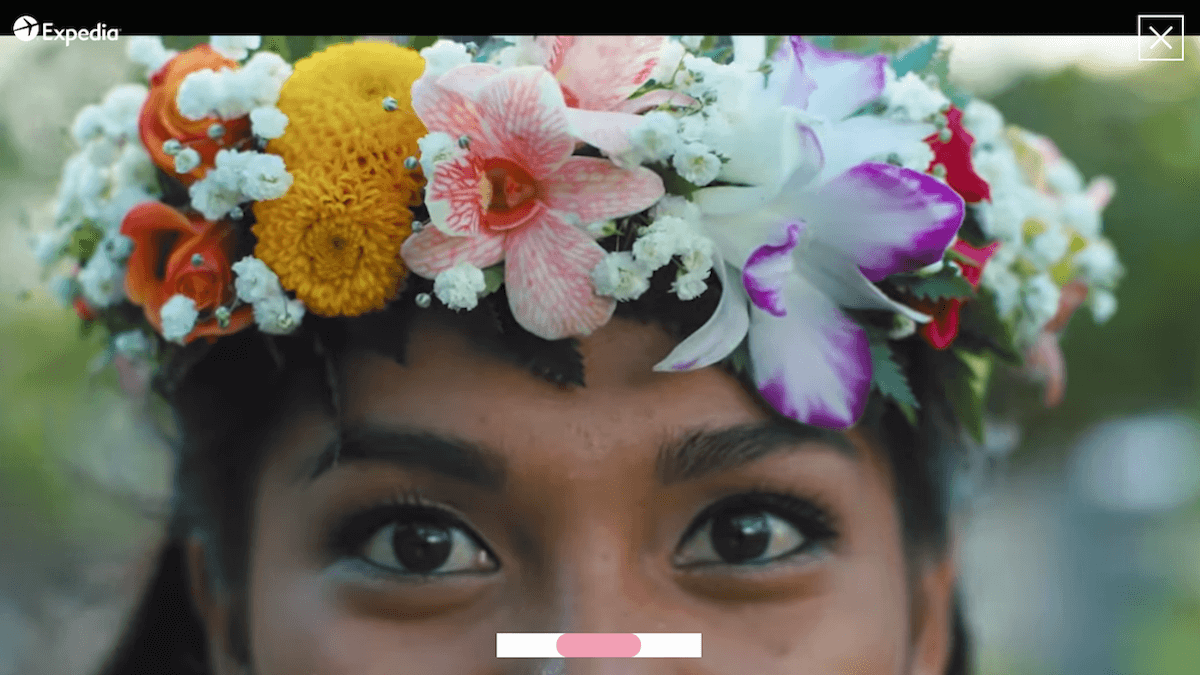Skift Take
Regardless of how visually appealing a destination’s content may be, if it doesn’t tell a story it likely won’t sell a destination. Below are 3 ways destination marketers can make sure they’re differentiating their brand’s visual content.
This sponsored content was created in collaboration with a Skift partner.
A captivating image of a destination is bound to garner a traveler’s interest, and might even be enough to get them to book a trip. In fact, MMGY found that 37% of people make a travel decision based off of images.
However, a beach sunset photo can look strikingly similar across many tropical locations, and may not be enough to encourage someone to choose one destination over another – differentiation is key. Visually appealing images and other content must also tell a story about the destination to stand out from the competition and attract potential visitors.
Storytelling enables destination marketers to do more than simply tell travelers about a place – it provides consumers with an opportunity to immerse themselves in a powerful experience. By adopting a storytelling mindset to the production of visual content, destination marketers can more effectively bring their themes to life and inspire visitors.
Here are a few ways destination marketing organizations (DMOs) can share their story:
Identify the iconic
First, a destination must find its unique identity, and then create content that tells the story of its individuality. A destination’s brand identity often features overarching themes relevant to the area such as food, culture, heritage or outdoor adventure. Many of these themes are shared with other destinations – which is why it’s crucial to focus on showcasing what is iconic about the destination. By highlighting the actual experiences and attractions that relate to each theme, and how they are unique to the location, destinations can attract travelers.
For instance, to differentiate itself from other beach and island destinations around the word, the Hawai’i Tourism Authority partnered with Expedia Media Solutions on a campaign that embodies the unique and rich culture of the Hawaiian Islands. The “Discover Your Aloha” campaign uses innovative facial recognition technology to generate personalized travel recommendations.
Additionally, a campaign video highlights the beauty of the Hawaiian Islands, and based on a viewer’s reaction to the video content, they are paired with an animal guide of significance to Hawaiian culture. Each animal guide represents different types of activities and experiences – from romantic, to adventurous, and more – and integrates personalized travel recommendations and special offers. The campaign is not only driving awareness of the islands, but also tells the story of the unique cultural identity of Hawaii.
Consider point of view
Another valuable technique is incorporating a first-person point of view. Since travel is inherently personal, this helps potential travelers imagine themselves in the destination and visualize what they would experience on their trip. There are some brands using virtual reality (VR) to do just that; give viewers on the other side of the screen the ability to stroll (or in this case, scroll) around a place from a first-hand perspective. After President Obama and the First Family visited Yosemite National Park, National Geographic used VR to give users the same park experience. Users had the ability to explore the same scenic views and historic sites of Yosemite as the First Family.
Add interactivity
Interactive elements can also engage potential travelers in a destination’s story. Through interactivity, users can participate in an online experience, making the virtual experience even more personalized and real – and the actual experience more coveted. One way to achieve this is through interactive video. Expedia Media Solutions worked with Visit Denmark to create an award-winning, interactive campaign that did more than invite viewers to watch an online video about Copenhagen and Aarhus – users could make decisions about where the video took them and explore different scenarios. The activities featured in the video were captured from a first-person vantage point and uncovered things visitors may not have known about in Copenhagen, like its unique farmer’s markets or the river that runs through the middle of the city that visitors can explore by kayak.
Travel Alberta is another example of a DMO harnessing the power of interactivity to elevate their destination, and differentiate it from the competition. Their interactive site allowed users to scroll and filter according to unique themes. With seasonal rotating content, the website expanded visitors’ misconceptions of Alberta as an outdoor adventure destination only. It promoted foodie delights, destinations for art lovers and other cultural attractions. User-generated content from the photo-sharing app Viewfinder also fostered engagement and dialogue.
Given consumers’ voracious appetite for a good story, destination marketers can use these storytelling techniques to give travelers even more reasons to pack their bags. However, telling a compelling story is just one of the many ways DMOs can stand out and increase visitation to their destination. For more tips and tricks on content marketing for the DMO, download our new eBook: Content Marketing for Destination Marketers.
Download Free eBook
Have a confidential tip for Skift? Get in touch

